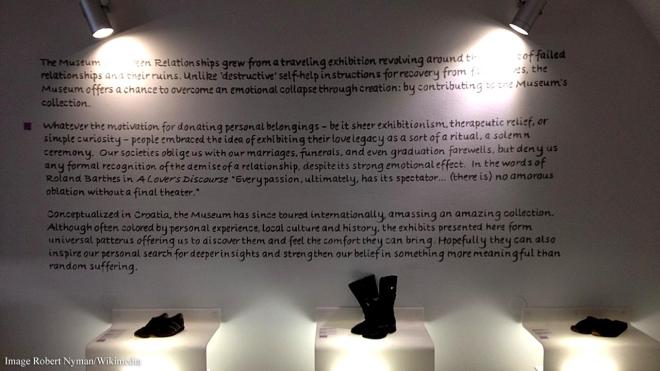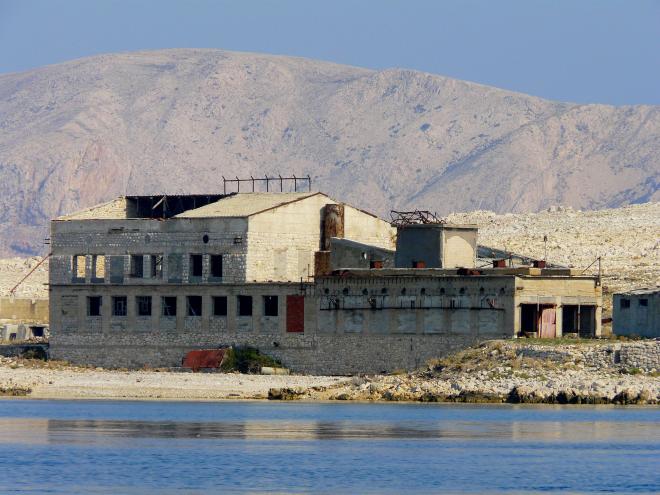Croatia is a fascinating country which offers art and culture [VIDEO], glorious beaches and seaside resorts and plenty of history.
The country also has its more unusual side, which can be seen from the following attractions. There is everything from a museum dedicated to broken relationships, to another which is home to hundreds of stuffed frogs. Relaxing music can be enjoyed from an organ powered by the sea and wind and there are two formerly impenetrable prisons to be visited.
Museum of Broken Relationships - Ćirilometodska 2, Zagreb, Croatia
The Museum of Broken Relationships was formed by two Croatian artists, Drazen Grubisic and Olinka Vistina when they separated. They were reluctant to part with sentimental keepsakes of their relationship so they opened the museum to display them. The idea soon took off as the museum went on tour, with people all over the country donating their reminders of a broken heart. The museum now has a permanent home in Zagreb, where it displays letters, teddy bears, a woman’s tears and much more.

Froggyland - Ul. Kralja Tomislava 5, Split, Croatia
Froggyland is a collection of stuffed frogs, doing things humans would normally do, including construction work, playing tennis, circus displays and more. There are 507 stuffed frogs in the collection, arranged in 21 different cases. Ference Mere is a Hungarian taxidermist who spent 10 years stuffing and arranging the frogs in different layouts. He finished the project in 1920 and at that time there were approximately 1,000 frogs. The work, while eccentric, is truly remarkable.
Zadar Sea Organ - Istarska Obala Wharf Zadar, Croatia
The Zadar Sea Organ is located under a set of large steps leading into the waves. It is similar to San Francisco’s Wave Organ and Blackpool’s High Tide Organ. There are 35 tubes, as well as a resonating cavity, which make music using the wind and sea. The music sounds eerily like whale calls. The Sea Organ was created by Nikola Basic and was completed in 2005. The architect also created the Sun Salutation, a pattern of glass panels to capture the sunlight, powering a light show behind the organ.
St. Nicholas Fortress - Šibenik, Croatia
The formerly impenetrable St. Nicholas Fortress was built by the Venetians in the 16th century to defend against Turkish attacks. With a triangular shape and 32 cannons, the fortress was truly formidable. Its appearance alone was enough to keep away attackers. It was maintained by the military up until 1979, but now is abandoned and only seen by urban explorers and is surprisingly well-preserved. There is a footpath leading to the fortress from Sv. Nikola beach, or it can be accessed by boat.

Goli Otok - Lopar, Croatia
Goli Otok is considered to be the only gulag to ever exist in socialist Yugoslavia. It was built in 1948, three years after the end of World War II and shortly prior to the cold war. Located on a barren islet, Goli Otok was Marshal Tito’s most notorious prison. The islet was previously used as a prison in the Austro-Hungarian war during WWI for housing Russian prisoners of war. Tours of the prison are available from travel agencies in the resort islands of Rab and Krk.

![Dine among Roman ruins or explore some of the best unusual attractions in Croatia. [Image CCO | Pixabay] Dine among Roman ruins or explore some of the best unusual attractions in Croatia. [Image CCO | Pixabay]](https://staticr1.blastingcdn.com/media/photogallery/2019/2/15/660x290/b_502x220x82/dine-among-roman-ruins-or-explore-some-of-the-best-unusual-attractions-in-croatia-image-pixabay_2206539.jpg)


